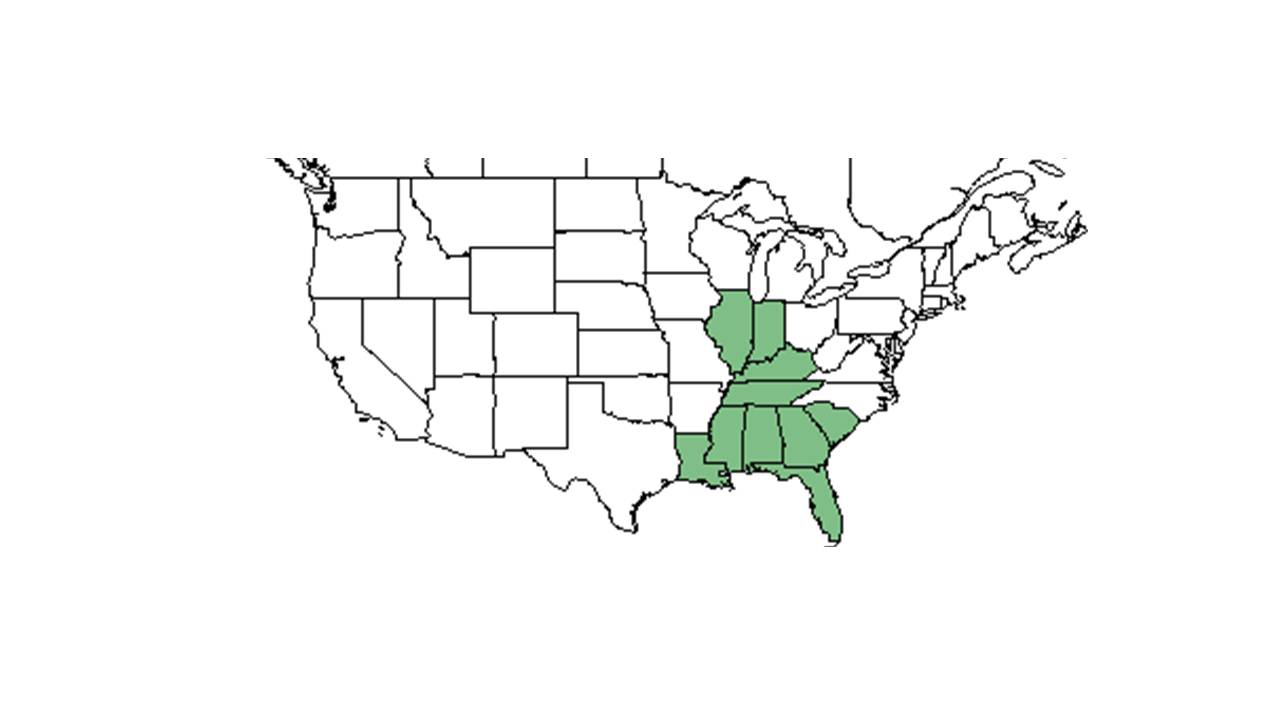Difference between revisions of "Oenothera filipes"
Ruthstetler (talk | contribs) (→Description) |
Ruthstetler (talk | contribs) |
||
| Line 28: | Line 28: | ||
==Ecology== | ==Ecology== | ||
===Habitat=== <!--Natural communities, human disturbed habitats, topography, hydrology, soils, light, fire regime requirements for removal of competition, etc.--> | ===Habitat=== <!--Natural communities, human disturbed habitats, topography, hydrology, soils, light, fire regime requirements for removal of competition, etc.--> | ||
| + | ''O. filipes" occurs in dry or well drained sandy soils and sandy loam (FSU Herbarium). It seems to be most common in areas that receive full sun or are only partly shaded (FSU Herbarium). It can be found in longleaf pine flatwoods or sandhills, scrub oak barrens, pine-oak woodlands, and limestone glades (FSU Herbarium). However, it can also appear in areas of disturbed habitat, including roadsides and common use recreational areas (FSU Herbarium). | ||
| + | |||
===Phenology=== <!--Timing off flowering, fruiting, seed dispersal, and environmental triggers. Cite PanFlora website if appropriate: http://www.gilnelson.com/PanFlora/ --> | ===Phenology=== <!--Timing off flowering, fruiting, seed dispersal, and environmental triggers. Cite PanFlora website if appropriate: http://www.gilnelson.com/PanFlora/ --> | ||
Revision as of 16:03, 20 July 2015
| Oenothera filipes | |
|---|---|

| |
| Scientific classification | |
| Kingdom: | Plantae |
| Division: | Magnoliophyta - Flowering plants |
| Class: | Magnoliopsida – Dicotyledons |
| Order: | Myrtales |
| Family: | Onagraceae |
| Genus: | Oenothera |
| Species: | O. filipes |
| Binomial name | |
| Oenothera filipes (Spach) W.L. Wagner & Hoch | |

| |
| Natural range of Oenothera filipes from USDA NRCS Plants Database. | |
Contents
Description
Common name: slenderstalk beeblossom
Synonym name: Guara filipes Spach
Oenothera filipes is a perennial herbaceous species.
Distribution
Ecology
Habitat
O. filipes" occurs in dry or well drained sandy soils and sandy loam (FSU Herbarium). It seems to be most common in areas that receive full sun or are only partly shaded (FSU Herbarium). It can be found in longleaf pine flatwoods or sandhills, scrub oak barrens, pine-oak woodlands, and limestone glades (FSU Herbarium). However, it can also appear in areas of disturbed habitat, including roadsides and common use recreational areas (FSU Herbarium).
Phenology
This species has been observed to flower and fruit from August to October (FSU Herbarium).
Seed dispersal
Seed bank and germination
Fire ecology
Pollination
Use by animals
Diseases and parasites
Conservation and Management
Cultivation and restoration
Photo Gallery
References and notes
Florida State University Robert K. Godfrey Herbarium database. URL: http://herbarium.bio.fsu.edu. Last accessed: June 2014.
Collectors: Loran C. Anderson, Gary R. Knight, John B. Nelson, Robert K. Godfrey, E. Tyson, R. D. Houk. Ann F. Johnson, Wilson Baker, R. Komarek, MacClendons, and G. Wilder.
States and Counties: Florida: Bay, Calhoun, Gadsden, Jackson, Leon, Liberty, Okaloosa, Santa Rosa, Wakulla, and Walton. Georgia: Thomas.